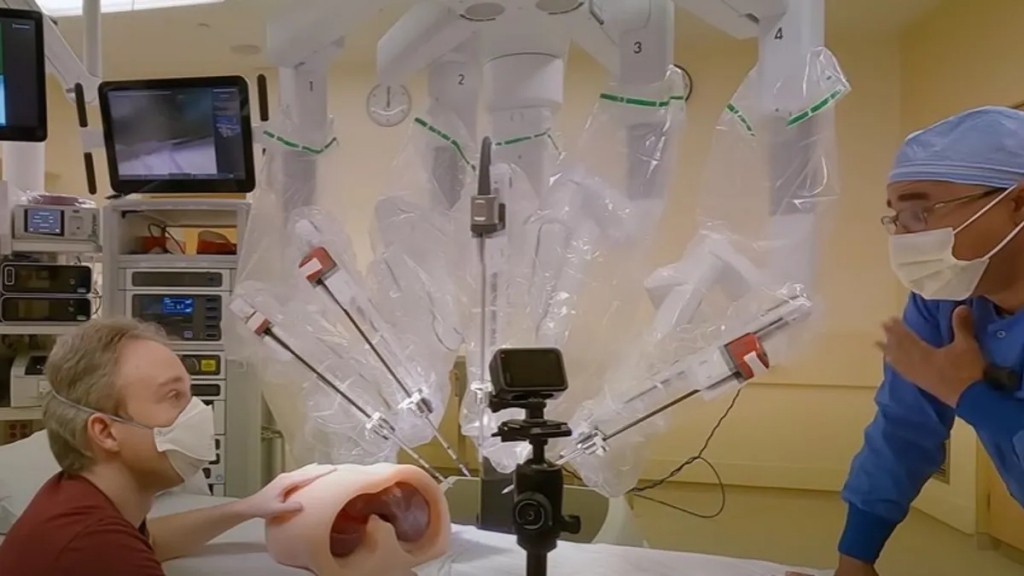Many applications for 3D printing have emerged, making life better or easier. The production of realistic replicas of human bodies, or partial bodies, for surgical rehearsals is an example of 3D printing innovation.
Tom Scott, a British YouTuber, performed one such demonstration by watching a robotic operation on a 3D-printed replica of his abdomen.
Lazarus 3D approached Tom and utilized a medical scanner to map out the size, shape, and position of his organs. The company then created a replica of his gut, complete with accurate organ replicas such as the liver, spleen, kidneys, and more.
Fortunately, Tom’s body was normal, and he didn’t require surgery, so the company implanted a cyst in his kidney simply so the surgeons could remove it in the demonstration.

Cameras were put into the prosthetic abdomen during the experiment, and a surgeon explored through Tom’s organs using the robotic arms of a surgical robot. The replica lacked realistic blood, although Lazarus staff claimed that copies with realistic blood are made by experts.
The surgeon then showed Tom his kidney and a realistic replica of the veins and arteries with distinct demarcation. He then displayed the cyst to be removed, and the surgery was carried out with Tom witnessing. During the demonstration surgery, the 3D-printed fluid-filled sac was pierced and poured into the duplicate of Tom’s abdomen before being removed.
To minimize any mishaps, surgeons can practice on 3D models. Additionally, surgeons can adjust their visuospatial awareness and prepare the robot to fit the size of the patient’s organs.

With the advancement of medical knowledge, doctors can now receive training for various intricate surgeries.


